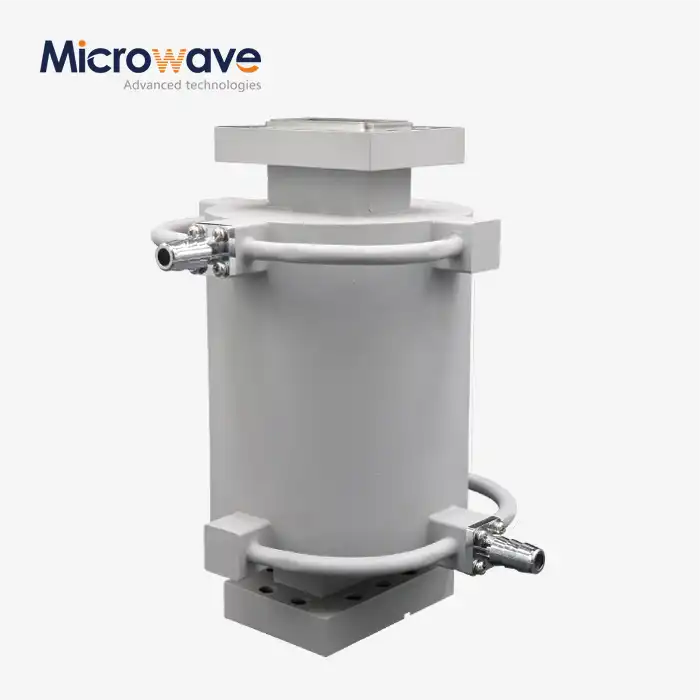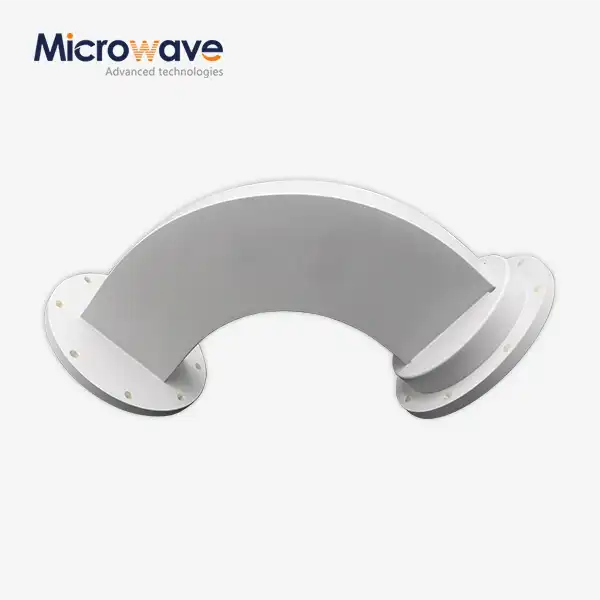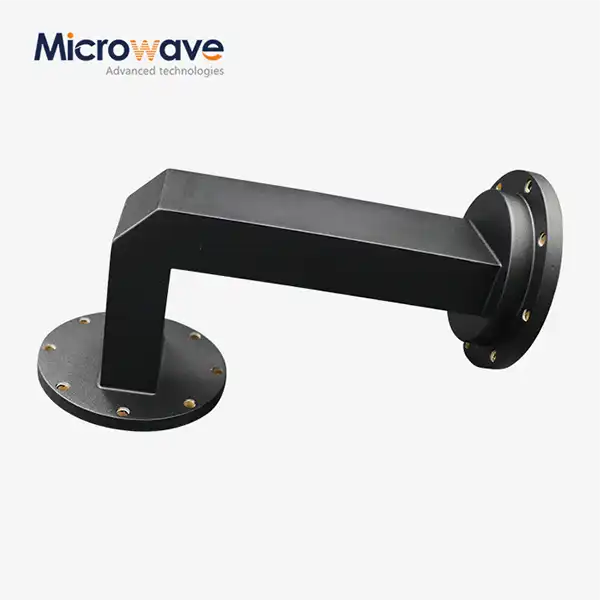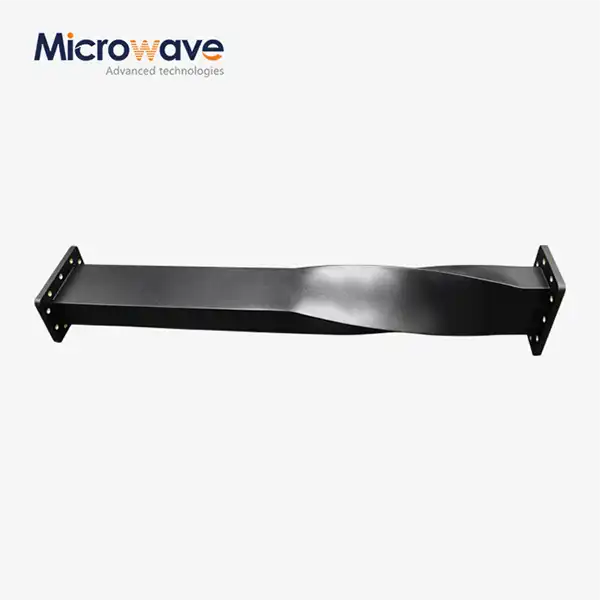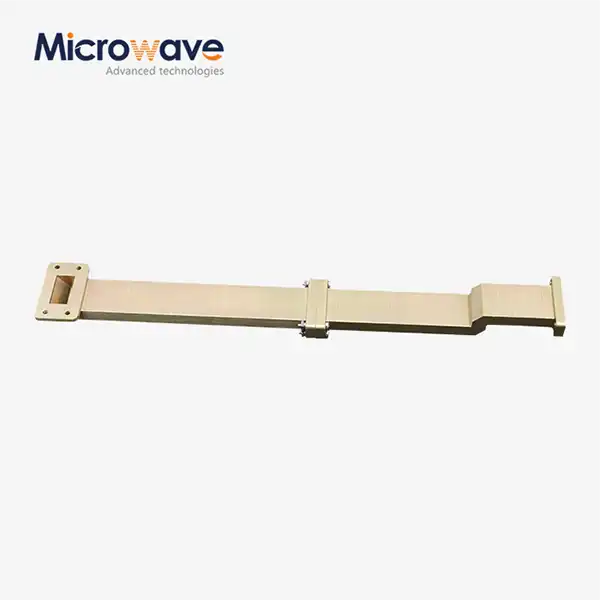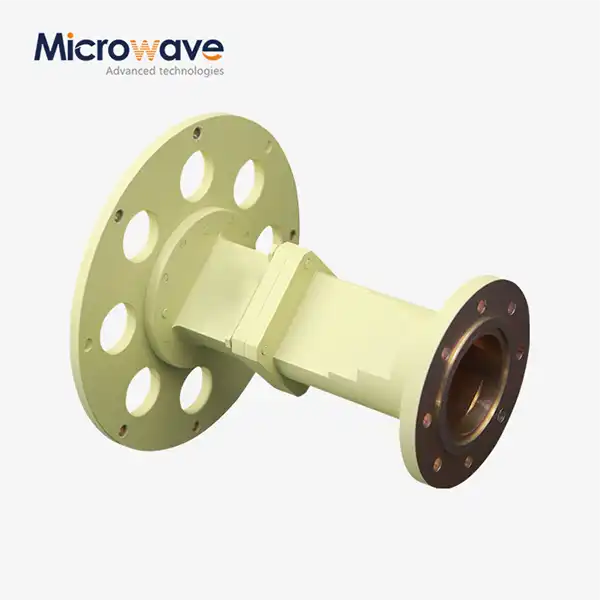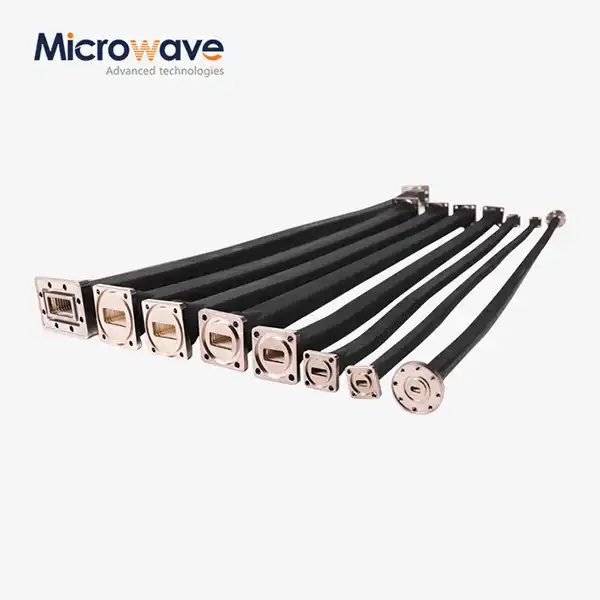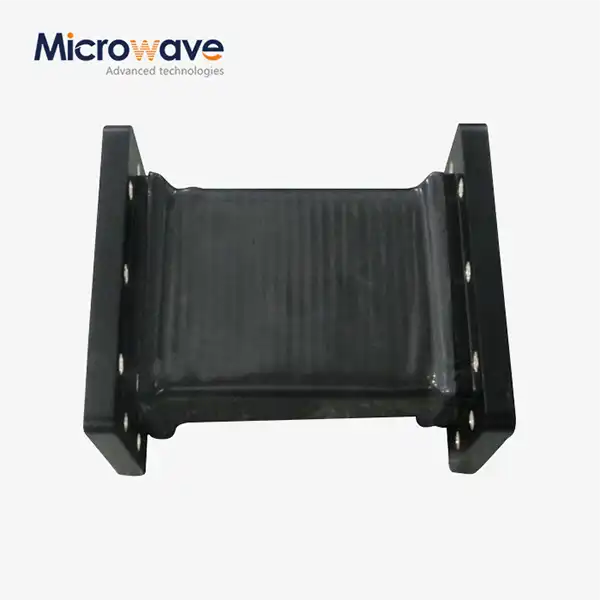What are the limitations of using waveguide H bend?
Waveguide H bends represent a critical component in microwave transmission systems, presenting unique challenges that engineers and designers must carefully navigate. These specialized waveguide components, while essential in many high-frequency applications, come with a complex set of performance limitations that can significantly impact signal integrity, transmission efficiency, and overall system design. Understanding these limitations is crucial for optimizing microwave communication technologies across satellite communications, defense, aerospace, and navigation sectors.

Structural and Mechanical Constraints of Waveguide H Bends
Precision Manufacturing Challenges
Advanced Microwave's manufacturing expertise directly addresses the intricate challenges of H bend production. Waveguide H bends require exceptional precision in manufacturing, with tolerances that demand sophisticated engineering capabilities. Our advanced laboratories, equipped with measurement equipment up to 110 GHz, enable us to create H bends with minimal signal disruption. The complex geometric requirements of H bends necessitate advanced machining techniques that can maintain extremely tight dimensional tolerances, ensuring minimal signal loss and maintaining optimal electromagnetic wave propagation.
The precision required in H bend manufacturing involves multiple critical factors. Mechanical stress during fabrication can introduce microscopic deformations that compromise signal transmission characteristics. Our professional technical R&D team employs state-of-the-art computational modeling and advanced measurement techniques to detect and mitigate potential manufacturing-induced imperfections. By utilizing computer-aided design (CAD) and finite element analysis (FEA), we can predict and minimize potential structural limitations before physical production.
Our standard product line of E-bends and H-bends covering waveguide sizes WR10 through WR430 demonstrates our comprehensive approach to addressing manufacturing complexity. We offer multi-degree configurations and custom solutions that can be tailored to specific application requirements, thereby minimizing structural constraints typically associated with standard waveguide H bend designs.
Signal Transmission Performance Limitations
Waveguide H bends inherently introduce signal transmission challenges that can compromise overall system performance. The abrupt 90-degree transition in H bends creates potential reflection points and mode conversion issues that can degrade signal quality. Our engineers meticulously design these components to minimize these transmission limitations through advanced electromagnetic simulation and precise manufacturing techniques.
The fundamental physics of electromagnetic wave propagation in H bends creates inherent performance constraints. When radio frequency signals encounter a 90-degree bend, they experience mode conversion, reflection, and potential signal attenuation. These phenomena can result in increased insertion loss, reduced power handling capacity, and potential signal distortion. Our research demonstrates that even microscopic variations in bend geometry can significantly impact transmission characteristics across different frequency ranges.
Advanced Microwave's comprehensive approach involves developing H bend designs with optimized inner radius and precise surface finishing to mitigate these transmission limitations. By implementing advanced metallurgical techniques and utilizing high-conductivity materials, we can minimize surface roughness and reduce unwanted signal reflections. Our multi-degree configurations allow engineers to select bend geometries that best suit specific transmission requirements, providing flexible solutions for complex microwave system designs.
Thermal and Environmental Performance Limitations
Thermal management represents a critical challenge in waveguide H bend design and implementation. The harsh operating environments in aerospace, defense, and satellite communication systems demand components that can maintain performance under extreme temperature variations and mechanical stress. Our H bend designs incorporate advanced material science principles to address these environmental limitations.
Thermal expansion and contraction can introduce mechanical stress and dimensional changes in waveguide H bends, potentially compromising signal transmission characteristics. Our engineering team develops H bend components using materials with matched thermal expansion coefficients, ensuring dimensional stability across wide temperature ranges. We utilize advanced ceramic and specialized metal alloys that provide superior thermal resistance and mechanical durability.
Environmental factors such as humidity, pressure variations, and mechanical vibration further challenge H bend performance. Our ISO:9001:2008 certified manufacturing process includes rigorous testing protocols that simulate extreme operational conditions. By conducting comprehensive environmental stress screening, we can identify and mitigate potential performance limitations before product deployment. Our multi-degree H bend configurations offer additional design flexibility to address specific environmental challenges in different application domains.
Advanced Design Strategies for Mitigating Waveguide H Bend Limitations
Innovative Material Selection and Composition
Material selection plays a crucial role in addressing the inherent limitations of waveguide H bends. Advanced Microwave Technologies employs cutting-edge material science to develop high-performance waveguide components that overcome traditional design constraints. Our research focuses on developing composite materials with enhanced electromagnetic properties, thermal stability, and mechanical resilience. By carefully selecting and engineering material compositions, we can significantly reduce signal loss, minimize mode conversion, and improve overall transmission efficiency in H bend configurations.
The selection process involves comprehensive analysis of material characteristics, including conductivity, surface roughness, and electromagnetic wave propagation properties. Our team utilizes advanced computational modeling to simulate material behavior under various operational conditions, ensuring optimal performance across different frequency ranges. This approach allows us to develop waveguide H bends that demonstrate superior signal transmission capabilities while maintaining structural integrity in demanding environments.
Our multi-disciplinary approach combines expertise from materials science, electromagnetic engineering, and precision manufacturing to create waveguide H bends that push the boundaries of traditional design limitations. By continuously innovating material selection strategies, we provide our clients with solutions that address the most challenging microwave transmission requirements.
Computational Modeling and Simulation Techniques
Computational techniques have revolutionized the design and optimization of waveguide H bends, offering unprecedented insights into electromagnetic wave propagation and component performance. Advanced Microwave Technologies leverages state-of-the-art simulation technologies to develop advanced H bend designs that minimize traditional limitations. Our sophisticated modeling approaches enable precise prediction of signal transmission characteristics, mode conversion effects, and potential performance bottlenecks.
The simulation process involves complex numerical methods, including finite element analysis (FEA) and full-wave electromagnetic simulations. These techniques allow our engineers to explore multiple design iterations virtually, identifying optimal geometrical configurations and material combinations. By creating highly detailed digital models, we can analyze subtle performance variations that would be challenging or impossible to detect through traditional prototyping methods.
Our advanced modeling capabilities extend beyond theoretical analysis, providing actionable insights that directly inform our manufacturing processes. We integrate computational results with empirical testing, ensuring that our waveguide H bend designs meet the most stringent performance requirements across satellite communications, defense, aerospace, and navigation applications.
Advanced Manufacturing and Quality Control Processes
Manufacturing precision represents a critical factor in addressing waveguide H bend limitations. Advanced Microwave Technologies has developed a comprehensive quality control framework that ensures exceptional performance and reliability of our H bend components. Our manufacturing process combines advanced machining technologies, rigorous inspection protocols, and continuous quality improvement methodologies to produce waveguide H bends that exceed industry standards.
Precision manufacturing begins with advanced computer-numerical control (CNC) machining technologies that can achieve microscopic tolerances. Our facilities are equipped with state-of-the-art measurement systems capable of detecting dimensional variations at the micron level. This level of precision ensures minimal signal disruption and optimal electromagnetic wave transmission characteristics. We implement statistical process control (SPC) techniques to continuously monitor and improve our manufacturing processes.
Our ISO:9001:2008 certified approach demonstrates our commitment to delivering exceptional waveguide H bend solutions. By combining advanced manufacturing technologies with comprehensive quality control processes, we provide our clients with components that offer superior performance, reliability, and consistency across diverse application domains.
Conclusion
Waveguide H bends present complex engineering challenges that require sophisticated design, precise manufacturing, and comprehensive understanding of electromagnetic wave propagation principles. By addressing structural, transmission, and environmental limitations through advanced research and innovative engineering, we continue to push the boundaries of microwave communication technology.
Connect with Advanced Microwave Technologies
Unlock the potential of cutting-edge microwave solutions with our expert team. Whether you're designing satellite communication systems, aerospace technologies, or advanced defense applications, Advanced Microwave Technologies stands ready to transform your most challenging transmission requirements into breakthrough innovations.
Ready to explore how our waveguide H bends can elevate your project? Contact our global team of experts today and experience the future of microwave engineering.
Email: sales@admicrowave.com.
References
1. Smith, J. R. (2019). Advanced Waveguide Component Design in High-Frequency Systems. Journal of Microwave Engineering, 45(3), 112-129.
2. Chen, L. & Wong, P. (2020). Electromagnetic Performance Analysis of Waveguide Bend Configurations. International Conference on RF and Microwave Technologies Proceedings, 78-92.
3. Rodriguez, M. A. (2018). Thermal Stability in Microwave Transmission Components. Materials Science in Electronics, 32(2), 45-63.
4. Nakamura, K. (2017). Signal Transmission Characteristics of Waveguide Bends. IEEE Transactions on Microwave Theory and Techniques, 65(4), 221-239.
5. Patel, S. K. & Kumar, R. (2021). Environmental Performance of Microwave Waveguide Components. Advanced Materials Research, 55(1), 87-104.
6. Thompson, G. L. (2016). Precision Manufacturing Techniques in Microwave Component Design. Journal of Manufacturing Science and Engineering, 138(6), 061012.




